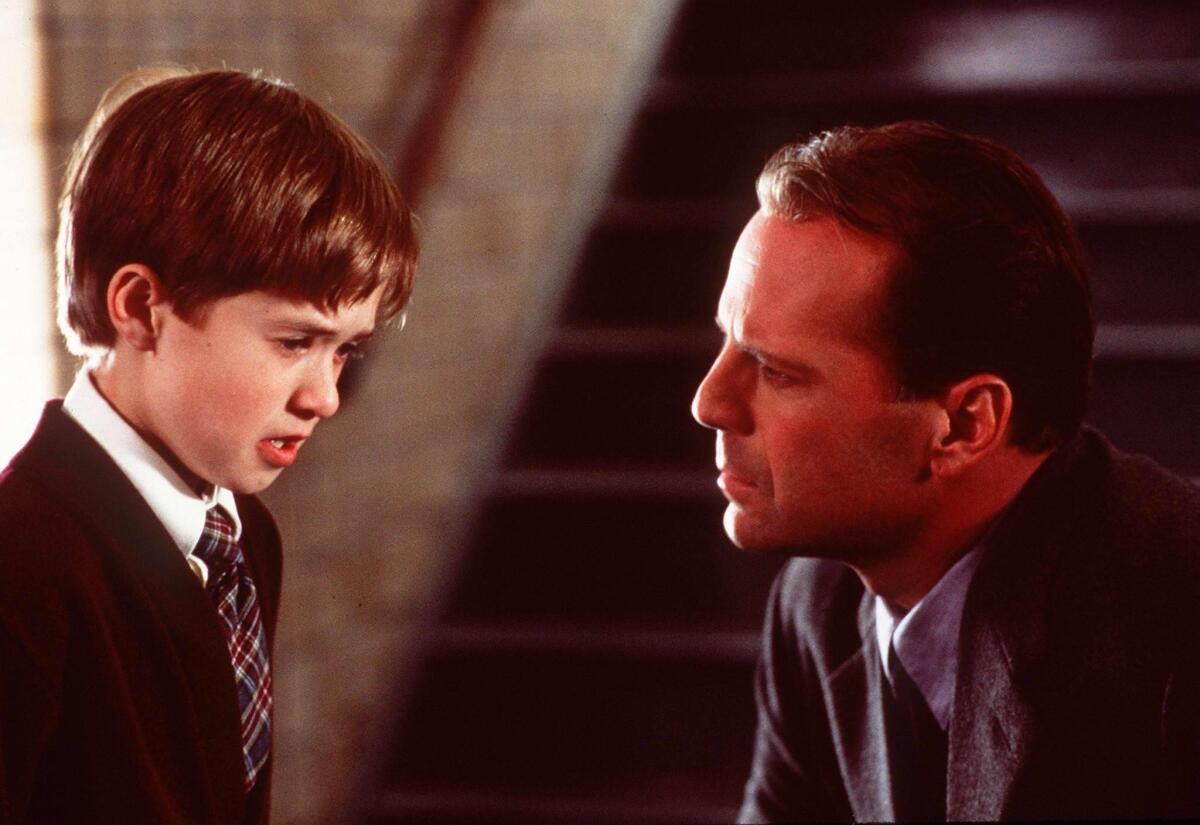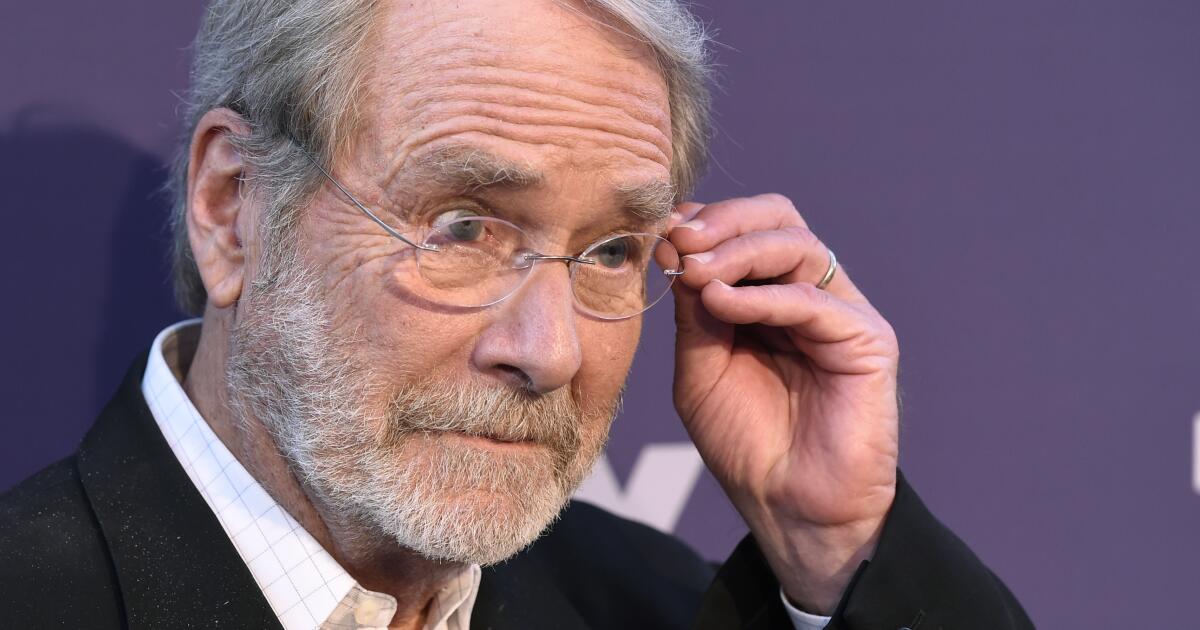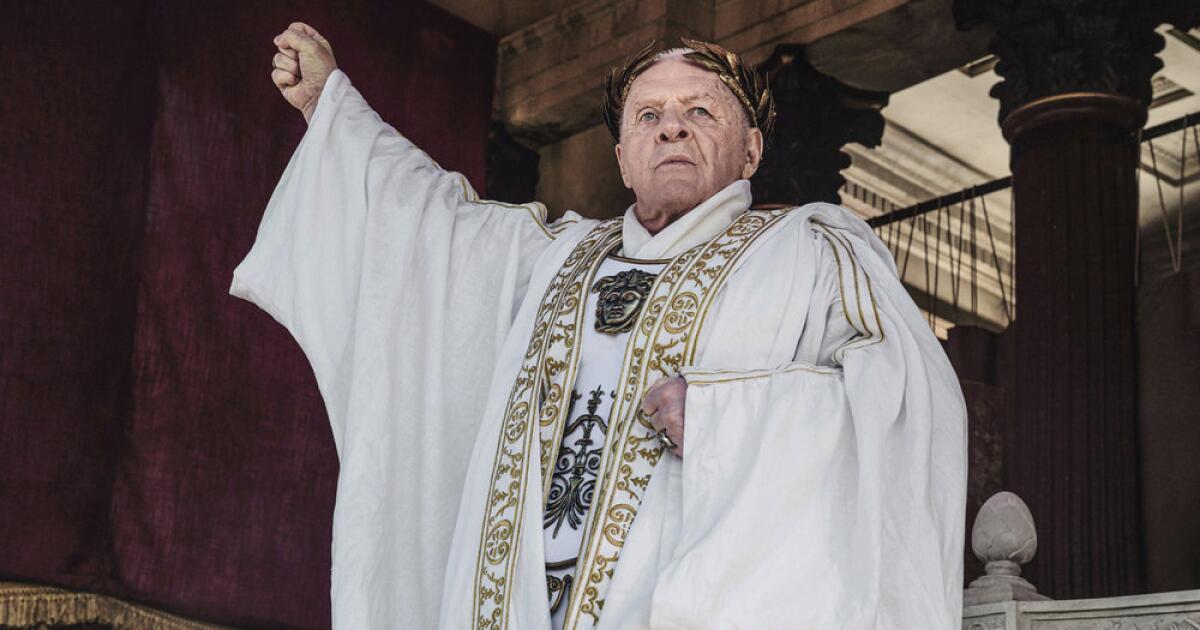Book Review
Bruce Willis: Celebrating the cinematic legacy of an unbreakable Hollywood icon
By Sean O'Connell
Applause books: 288 pages, $33
If you buy books linked to on our site, The Times may earn a commission from bookstore.orgwhose fees support independent bookstores.
Bruce Willis burst onto the scene in 1985 as an aggressively charming and talkative private detective who could get in and out of any trouble that arose. Starring opposite Cybill Shepherd in “Moonlighting,” which aired for five seasons on ABC, he was a star from the start, electrically funny with a touch of the swashbuckling hero he would become a few years later in “Hardcore.” kill” (1988).
Unlike fellow action stars (and Planet Hollywood partners) Arnold Schwarzenegger and Sylvester Stallone, Willis had range, moving from blockbusters to comedies to character roles and back again throughout his career. And he did it all with a refreshing human touch. As Sean O'Connell writes in his new book, “Bruce Willis: Celebrating the Cinematic Legacy of an Unbreakable Hollywood Icon,” Willis proved “that heroes didn't need to be chiseled in marble to prevail.”
There is something very sad about referring to the 69-year-old Willis in the past tense, or about the arrival of a book that serves as a career retrospective. But that's where we are. In 2022, Willis announced that he was retiring from acting due to aphasia, which progressed last year to frontotemporal dementia and will eventually take his life. It's a terribly cruel way to do it (my girlfriend, Kate, died after her pronounced decline in aphasia in 2020) and seems even worse considering Willis's prodigious gift of gab, even if some of his best roles (Butch in “Pulp Fiction”)”, Dr. Malcolm Crowe in “The Sixth Sense” (1999) – were quite stoic.
John Goodman, quoted in the book, met Willis when the future star was a New York bartender and was sure Willis would be a successful actor just because of the way he joked with customers.
So it's hard not to read O'Connell's book as a kind of farewell, although it is also, as the title suggests, a celebration. The author provides a film-by-film breakdown of Willis' career, dividing his work into categories (including comedies, action films, science fiction, and the like. The “Die Hard” franchise has its own section).
O'Connell, a veteran journalist and author, proves to be a thoughtful guide, and under the circumstances it is perfectly understandable that the book could be overly generous (for example, in describing the critical reaction to the 1991 “Hudson Cat Thief” fiasco). Hawk” as “warm”).
Here we advance a fascinating career that encompassed both stardom and acting as its own reward. It is this second part of Willis's story that too often receives little attention. Willis constantly sought out actors and filmmakers he wanted to work with, often knowing that his name would help him get the green light for a project.
Quentin Tarantino wasn't really Quentin Tarantino yet when Willis signed on for what would be a supporting role in 1994's “Pulp Fiction” (Willis wanted to play Vincent Vega, the role John Travolta landed, but was happy to play Butch, the boxer. with a fierce attachment to an old watch). As O'Connell points out, the role is often silent and shows that Willis doesn't need to open his mouth to have a strong screen presence.

M. Night Shyamalan's “The Sixth Sense” made Bruce Willis, left, with Haley Joel Osment, the first actor to earn more than $100 million in salary for a single film, Sean O'Connell writes.
(AFP/Getty Images)
Similarly, M. Night Shyamalan was an unknown when he cast Willis in “The Sixth Sense.” The unexpected hit became the highest-grossing film of Willis' career, and Willis got his share of the action. As O'Connell writes: “Because he agreed to a compensation deal worth 17.5% of both the film profits and the DVD profits, 'The Sixth Sense' made Willis the first actor to win more than $100 million in salary for a single film. ”
The same year as “Pulp Fiction,” Willis played an interesting supporting role in Robert Benton's “Nobody's Fool,” largely because he wanted to work with Paul Newman. This is my favorite type of Willis performance. His Carl Roebuck, the sometimes boss of Newman's Donald “Sully” Sullivan and owner of a construction company in upstate New York, is something of a jerk, a womanizing bully, and Sully's enemy. But Willis makes him fun, giving him a swagger that makes him more of a likable bully than a true bad guy. He fits perfectly into a movie full of big character changes, but, being Willis, he never fades into the background.
“Nobody's Fool” takes up only part of a chapter here, but this too is forgivable. Leafing through this book reminds us of Willis's eclecticism. Combine the films mentioned above with films like “Looper,” “12 Monkeys,” “The Fifth Element,” “Death Becomes Her,” “Moonrise Kingdom” and others, and you have a great career that often zigzagged when you expected it to. zag
The films mentioned only in passing, in an appendix, are also worth mentioning, but not for good reasons. The latest photographs of Willis have been appearing in recent years; most of them are poor and some show signs of cognitive decline. “Detective Knight: Independence”. “White elephant.” “Paradise City.” And, unfortunately, much more. This is not the way to remember such a singular actor and star, and O'Connell wisely buries these titles at the end of the book, where they should remain.
Luckily, Willis has brought us enough joy over the years to help us out. As a wise man once said, yippee-ki-yay.












